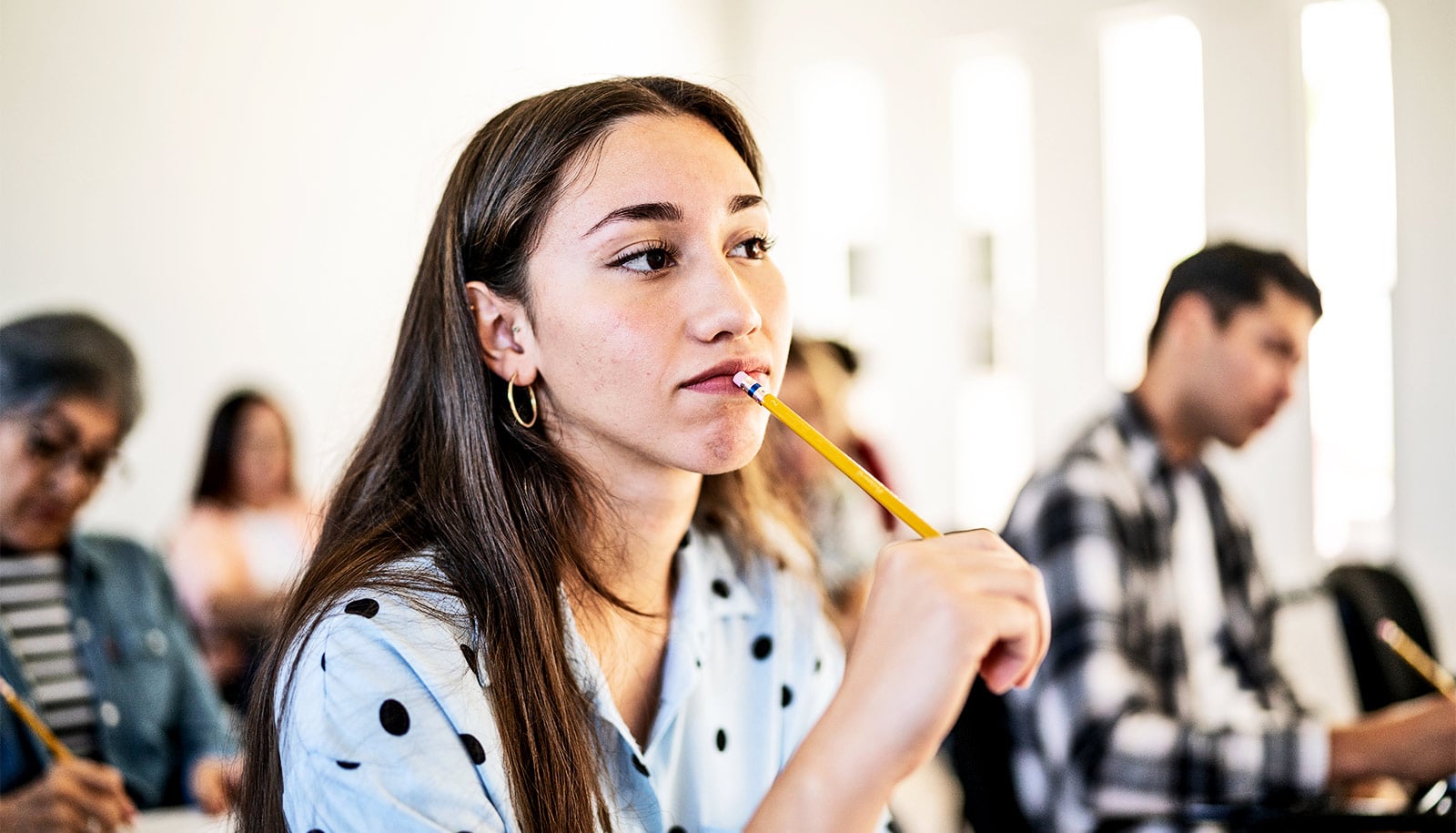A new study suggests college students are getting better at asking for help when it comes to their mental health and well-being.
For the third year in a row, the Healthy Minds Study—an annual nationwide effort co-led by a Boston University researcher—indicates that the mental health of college students is improving.
The team surveyed more than 84,000 US college students, finding a fall in the number of students experiencing moderate or severe depressive symptoms, moderate or severe anxiety symptoms, and suicidal ideation. They also found that more students are seeking professional help and medication.
While these changes are undoubtedly a good thing, Sarah K. Lipson, a study principal investigator and a BU School of Public Health associate professor of health law, policy, and management, says that we should still be keeping a close eye on student mental health.
“This is still an urgent problem, and there’s a lot of inequalities that persist,” she says. “There’s a lot of reasons to still be paying very close attention to student mental health, but there’s also, for the first time in a long time, a little bit of good news and motivation for schools to keep on doing some of the things that they’ve been doing.”
The number of students experiencing symptoms of severe depression dropped to 18%, compared to 23% in 2022, and suicidal ideation was down to 11%, from 15% in 2022. However, more than half of students still report experiencing loneliness, and substance use among students continues to rise.
The study is conducted by the Healthy Minds Network, led by researchers at BU, the University of Michigan School of Public Health, the University of California, Los Angeles, Fielding School of Public Health, and Wayne State University. The 2024-2025 study had responses from students at 135 colleges and universities—including BU—and over 9,000 faculty and staff members from 22 institutions. This is the second year that campus employees have been included in the survey.
Here, Lipson digs into the study’s findings and how college students can improve their mental health:
In your opinion, why have we been seeing this improvement in mental health?
A lot of increased attention around student mental health came to the surface during the pandemic. People assume the prevalence rates must have risen dramatically during that time. But that’s actually not the case. We really saw a continuation of troubling trends throughout the pandemic. But what did happen uniquely during the pandemic was an embracing by colleges and universities of a public health approach to mental health. It’s not just about one-on-one counseling and therapy, it’s also about prevention and population-level approaches. Coming out of the pandemic, when we saw slight improvements [in well-being] for the first time in well over a decade, we thought, this is a possible indication that the public health approach to mental health that we’ve seen so many schools adopting is working. [To also have that in] our most recent data, I think is in part due to a more comprehensive approach to addressing student mental health needs.
Do you think college students’ mental health will continue to improve?
I certainly hope that’s the case. If we’re attributing some of these improvements to investments in a population-level approach, I think that more and more schools are adopting that.
At the same time, there are factors that are really outside of an institution’s control, things like the sociopolitical climate or social media. So one of the indicators that we ask schools to pay really close attention to in the Healthy Minds Network is how much students think mental health is a priority on their campus—how supportive they think their campus is to mental health, their sense of belonging on campus. Of course, we want to see depression, anxiety, and suicidal ideation decreasing, but when there are factors outside of the boundaries of a college or university, the things that are more in their control are things like how students feel at their campus in terms of mental health and well-being.
As a student, what are some ways that I can seek to improve my mental health?
There’s some low-hanging fruit, things that, especially when we get busy, are the first things to go, but are so important to our mental health: sleep, nutrition, having connections with people, making time for friendships, for conversations with family. Things like that can feel like they’re not a priority when you’re in the middle of midterms or finals, but they are so important for your mental health. It’s also one of the reasons why college is such an important setting for studying mental health, because it coincides with the age of onset for a lot of lifetime mental health problems.
About 75% of lifetime mental health problems like depression or anxiety will onset by around age 25. So, there’s a unique opportunity for early intervention, prevention, and identification of students and trying to link them to services while they’re in college.
Seeking out coping skills, looking for what resources exist, like groups or digital mental health interventions or one-on-one counseling therapy, is really beneficial. And then when you’re in that environment of seeking out a service, to almost be a little bit selfish with it and say, “I have goals, I have things that I want to accomplish in this.” Being shy or withholding is not going to serve that goal. You need to say these are the things you’re really struggling with. You need to be vulnerable.
Has the current sociopolitical climate had any effect on student mental health?
I asked our data team to break the survey results down by semester and look at the fall 2024 semester versus the spring 2025 semester, because so much had changed, particularly sociopolitically.
I was expecting to see some shifts, but at least between fall ’24 and spring ’25, we didn’t see many changes. We even looked specifically at data from international students or LGBTQ+ students. The inequalities still exist, but the magnitude of those inequalities didn’t shift, which was a bit of a surprise to me. We’ll continue to be monitoring and looking at that. One caveat is that, particularly with international students, enrollment patterns have changed. We are only surveying the students who are at school.
How does the survey itself point students to resources?
We used to just conduct the survey and, within the algorithm, it would detect the students who have the highest level of need or the highest risk level. And it would just give them a little bit of additional information at the end. But today’s college students are used to, and expect, data on themselves, so it was really not aligned with this generation’s needs and expectations.
Now, we have an approach where, when the survey is ending, we thank students and we say, “Would you like some feedback about your responses? Would you like to see what your data looked like?” And then we talk them through the major screening tools and give them specific resources. The end of the survey is intended to be a tailored resource for students, where we work with each school to identify the resources that they want suggested to students based on their results. And then we also have national resources that we promote. I think that’s probably something that many students aren’t aware of when they’re considering whether to take the time to take the survey.
Source: Boston University



